 |

|
|
|
|
|
Real Life Situation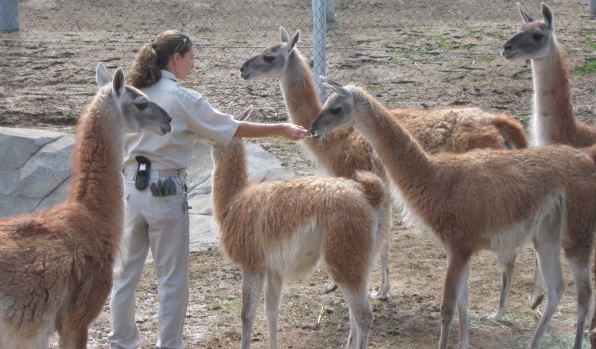
|
Step-by-Step Commentary
Step 1 : Getting Started We can see a staff member feeding the animals (in this case a group of Llamas from South America) When we plan our Data Model, we realise that what brings all the participants is the Event of "Feeding the Animals". Therefore our Approach is to think firstly about the Event and then how the people and animals are related to each other in the context of Feeding-Time. |
Real Life Situation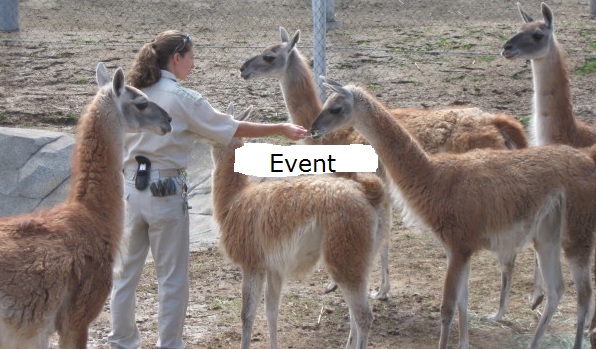
|
Step-by-Step Commentary
Step 2 : Our first Model consists simply of the Event Entity. 
|
Real Life Situation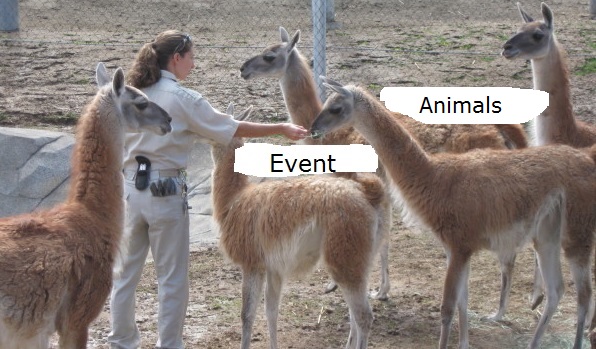
|
Step-by-Step Commentary
Step 3 : Now we add the Animals Entity with a line between Animals and the Event to show they are related. 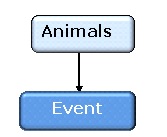
|
Real Life Situation
|
Step-by-Step Commentary
Step 4 : We can see a staff member feeding the animals so we add a Staff Entity with a line to the Event to show their Relationship. 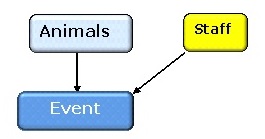
|
Real Life Situation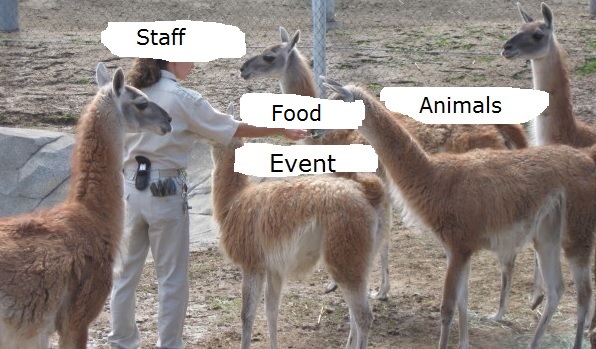
|
Step-by-Step Commentary
Step 5 : Now we add Food with a line to the Event Entity. 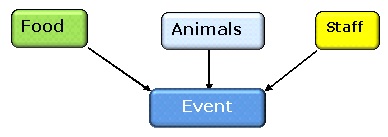
|
Real Life Situation
|
Step-by-Step Commentary
Step 6 : Review our Data Model Now is a good time to review our Data Model. First we realise that there will usually be more than one Animal participating in a Feeding-Time Event. So we change the relationships to show that. 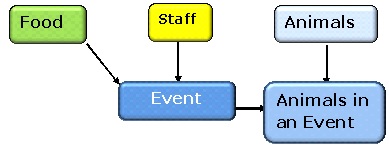
|
Real Life Situation
|
Step-by-Step Commentary
Step 7 : Food in an Event We have assumed that there will be only one type of Food provided at the Feeding-Time Event. However, it is more reslistic to create a Data Model which we can use in a situation where there is more than one type of food provided. So we add an Entity called 'Food in an Event'. It is very clear that there is only one member of Staff so that part of our Model is correct. 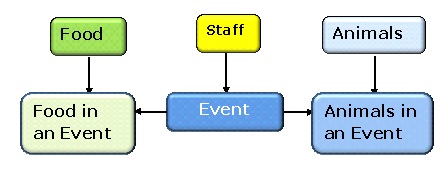
|
Real Life Situation
|
Step-by-Step Commentary
Step 8 : An Entity-Relationship Diagram (ERD) The Model that we have created is a 'Conceptual Model' which is very good for talking to business Users. But for talking to technical people, such as developers, it is useful to have an ERD for the basis of communication. We have added some Attributes in each Entity or Table to provide a foundation for future detailed work. 
|
© Database Answers Ltd. 2015